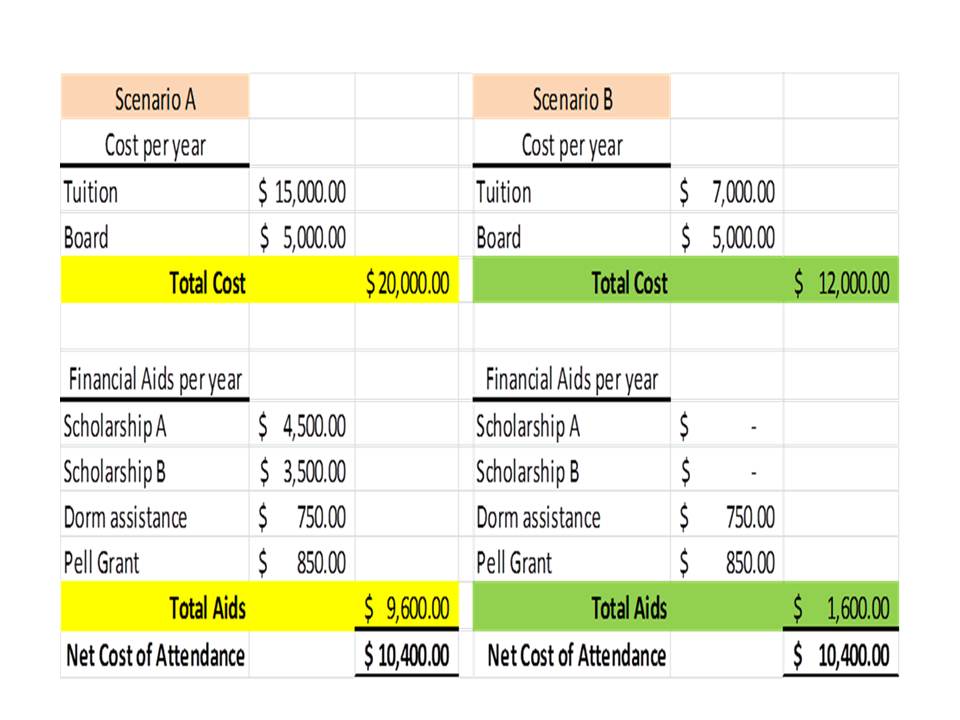AAEA is glad to learn that finally the rate (growth) of college tuition increases have slowed in the past two years as reported by the College Board and quoted and written by John Sandman for MainStreet. For complete article, please click here. Keep in mind that the tuition is still increasing, but at the slower rate (that is what it meant by declining rate of tuition increases). The article further mentions that tuition declining is also followed by decreasing government aids.
AAEA would like to take further analyses on college tuition pricing policy using an example. Suppose that Mr. ABC gets admitted to study at College XYZ and his financial award letter is shown in scenario A:

Scenario A is a simple version of the financial award letter that the admitted applicants will receive. Let us analyze what are happening here.
1. If one compares scenario A and B, she or he noted that the Net Cost of Attendance is the same ($10,400). However, scenario A and B show two different things.
2. On scenario B, the tuition has dropped from $15K to $7K. This drop comes from subtracting $15K with the sum of scholarship A and B.
3. Potentially scholarship A and B are not real scholarships (sometimes it was disguised under college tuition discount or tuition subsidy). But were mentioned in the award letter to show that College XYZ is generous enough to “award” the candidate with “
bogus” financial aids so that Mr. ABC feels good or at least feel that he is appreciated or that College XYZ cares of his future education. This strategy is closely tight with the college retention objective.
4. The actual tuition is not $15K, rather only $7K.
5. Some portion of the applicant groups may pay the $15K by taking student loans or his or her parents may take government Parent Plus loans to pay for the inflated tuition.
6. The tuition has been inflated by (8K/7K)=114%.
7. If the “extra” money ($8K) is spent to improve student learning outcomes then it is justifiable.
8. However, if it goes for spending sprees and to increase the administrators’ salary, then college pricing practice is questionable. Our study finds for each $1.00 taken student loans, more than 40 percent goes to support the college overhead cost, public services and full-professors’ salary.
For details of the statistical or econometric study on the topic, please click here.
All in all, we are not sure who started or recommended such pricing decisions and why the consumers are willing to bail out the inefficiency? After over 150 years the society does not really know what is going on and why alumni and contributors are still supporting the inefficient system. However, one thing that we know from this simple example in that colleges are failed to be the agent of development and the agent of change as they supposed to and as they have claimed. Rather, they almost make the US economy to go bankrupt. Please read what the president of Converse College has said on how do US colleges make their decision on the tuition.
Readers, please write below your comments?

